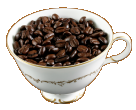Ethiopian Coffee – What It’s All About
Coffee usage can allegedly be traced back to the 9th century, in the highlands of Ethiopia. According to legend, Ethiopian shepherds have observed the goats to be “dancing” and somehow more animated after having eaten wild coffee berries. This story comes from that of a 9th century Ethiopian goat herder named Kaldi. People are, however, doubtful about such claim. Experts claim that the most reliable evidence are those that are found in the Yemen monasteries of the Arabian Peninsula in the middle of 15th century. The difference lies in whether one of the claims refer to the coffee trees per se or the modern ways of having the coffee roasted and ground, which originates in Arabia.
In the present times, Ethiopia is considered to be the fifth largest exporter of coffee beans. Over 1.7 million metric tons have been exported in the year 2008. Nevertheless, wild and native Arabica coffee trees are still considered to be the primary source for this exotic and historic coffee.
Majority of the coffee is still collected from wild trees that are growing despite the tropical rain forests at elevations from 5,000 to 6,000 feet. Moreover, Arabica coffees are also known to be grown by villagers in just small garden plots. Government sponsored estates give another source of producing coffee. Insignificant chemical usages as well as fertilizers indicate Ethiopian coffees as some of the most natural coffee available.
The two most popular Ethiopian coffees are known as Harrar and Yirgacheffe. They differ with regard to the place of origin and the process they undergo. Generally speaking, dry processing in Ethiopia is described as an informal process in which coffee fruit is put out to dry on roofs and places like such. Majority of dry processed coffee is locally consumed. However, the exception is the dry-processed coffee called Ethiopian Harrar. Harrar refers to a province due east of the capital city of Addis Ababa. Harrar coffee is infamous for its wine-toned and fruit acidity. The flavor profile is allegedly the same with the mocha taste of Yemenese coffee.
Categories: Coffee Articles Tags: coffee history, Ethiopian coffee, Harrar, Yirgacheffe
